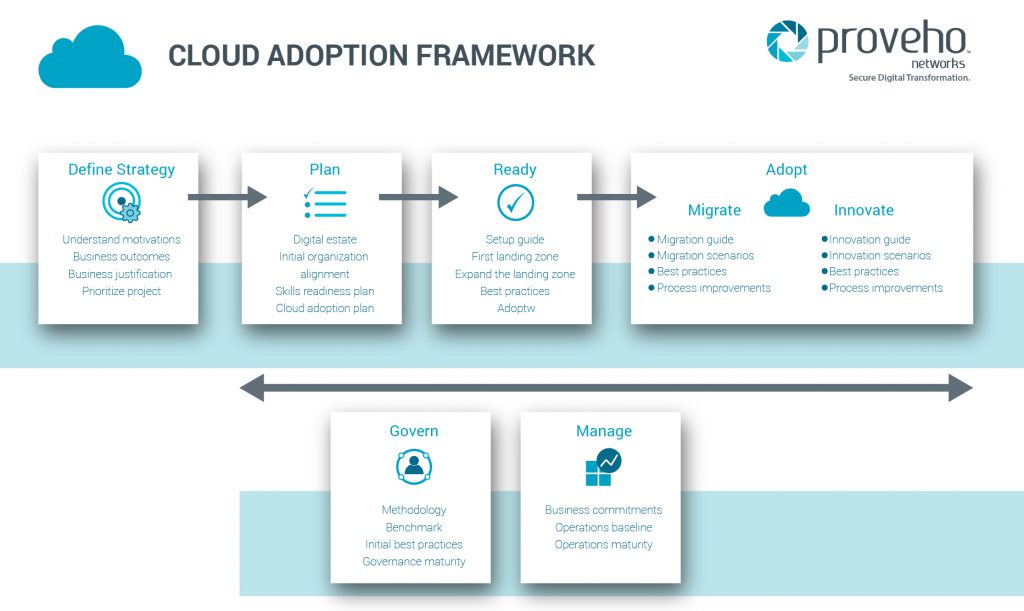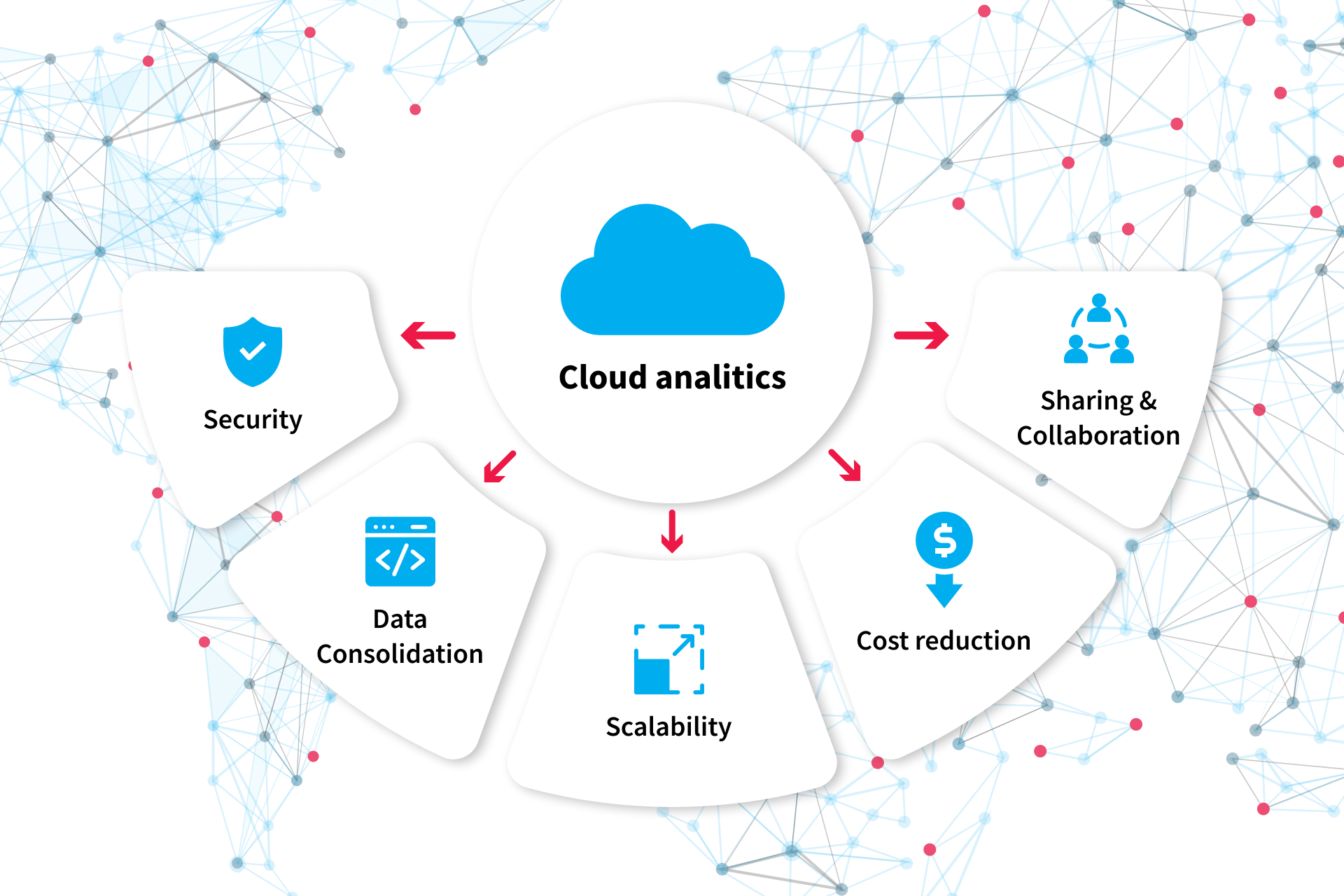The Power of Cloud Analytics: A Modern Approach to Data Analysis
Cloud analytics has emerged as a powerful tool for organizations seeking to harness the potential of data-driven insights. By leveraging cloud computing technology, cloud analytics enables businesses to collect, store, and analyze vast amounts of data in real-time, providing actionable insights that can inform decision-making and drive growth. In this article, we will explore the benefits of using cloud analytics for data-driven insights, including scalability, cost-effectiveness, and accessibility.
Scalability is one of the key advantages of cloud analytics. Unlike traditional on-premises analytics solutions, cloud analytics can easily scale up or down to meet changing data processing needs. This means that organizations can handle large volumes of data without having to invest in expensive hardware or infrastructure. Additionally, cloud analytics providers typically offer flexible pricing models, allowing businesses to pay only for the resources they use, which can lead to significant cost savings over time.
Another benefit of cloud analytics is its accessibility. With cloud analytics, users can access data and insights from anywhere with an internet connection, using any device. This enables remote work and collaboration, making it easier for teams to work together and share insights. Cloud analytics also offers robust security features, such as encryption, access controls, and data backups, ensuring that data is protected and secure.
Cloud analytics also provides advanced data visualization capabilities, enabling users to create interactive dashboards, charts, and graphs that make it easy to understand complex data sets. Predictive modeling capabilities allow organizations to forecast future trends and identify potential risks or opportunities. By leveraging these features, organizations can gain a competitive edge and make informed decisions based on data, rather than intuition or guesswork.
In summary, cloud analytics offers a modern approach to data analysis that is scalable, cost-effective, and accessible. By harnessing the power of cloud analytics, organizations can gain valuable insights from their data, inform decision-making, and drive growth. As cloud analytics technology continues to evolve, we can expect to see even more innovative and creative applications that provide value and usefulness to businesses and organizations.

Selecting the Right Cloud Analytics Platform: A Buyer’s Guide
When it comes to harnessing cloud analytics for insights, selecting the right platform is crucial. With a multitude of options available, it can be challenging to determine which one is the best fit for your organization’s needs. In this guide, we will discuss the key factors to consider when choosing a cloud analytics platform, such as data integration capabilities, security features, and user-friendly interfaces. We will also mention specific products or services where relevant.
First and foremost, it is essential to consider the data integration capabilities of a cloud analytics platform. Your organization likely has data stored in various locations, including on-premises servers, cloud storage, and third-party applications. A cloud analytics platform should be able to seamlessly integrate with these data sources to provide a comprehensive view of your organization’s data. Look for platforms that offer pre-built connectors for popular data sources, as well as the ability to create custom connectors if necessary.
Security is another critical factor to consider when selecting a cloud analytics platform. With the increasing threat of cyber attacks, it is essential to choose a platform that offers robust security features, such as encryption, access controls, and data backups. Additionally, look for platforms that comply with industry-standard security certifications, such as SOC 2 and ISO 27001. It is also important to consider the physical security of the cloud provider’s data centers, as well as their disaster recovery and business continuity plans.
User-friendly interfaces are also essential when selecting a cloud analytics platform. The platform should be easy to use, with intuitive navigation and clear instructions for performing tasks. Look for platforms that offer drag-and-drop functionality, as well as customizable dashboards and reports. Additionally, consider the level of training and support offered by the cloud provider, as this can significantly impact the adoption and ongoing use of the platform.
Specific cloud analytics platforms to consider include Amazon Web Services (AWS) QuickSight, Microsoft Power BI, and Google Cloud Platform (GCP) Looker. AWS QuickSight offers pay-per-session pricing, making it a cost-effective option for organizations with infrequent analytics needs. Microsoft Power BI is known for its powerful data visualization capabilities, while GCP Looker offers a unique modeling language that enables users to create custom calculations and metrics.
In summary, selecting the right cloud analytics platform is crucial for harnessing the power of cloud analytics for insights. When evaluating platforms, consider data integration capabilities, security features, and user-friendly interfaces. Specific products or services to consider include AWS QuickSight, Microsoft Power BI, and GCP Looker. By choosing the right platform, your organization can unlock the potential of cloud analytics and make data-driven decisions with confidence.
How to Harness Cloud Analytics for Actionable Insights
Cloud analytics has become an essential tool for organizations seeking to gain a competitive edge through data-driven insights. By harnessing the power of cloud analytics, organizations can gather and analyze vast amounts of data to uncover trends, patterns, and correlations that can inform business decisions. In this guide, we will provide a step-by-step approach to using cloud analytics tools for actionable insights.
Step 1: Define Your Goals and Objectives
Before you begin gathering data, it is essential to define your goals and objectives. What questions do you hope to answer through data analysis? What decisions do you need to make based on data insights? By establishing clear goals and objectives, you can ensure that your cloud analytics efforts are focused and aligned with your business needs.
Step 2: Identify Relevant Data Sources
Once you have defined your goals and objectives, the next step is to identify relevant data sources. Cloud analytics platforms can integrate with a wide variety of data sources, including databases, spreadsheets, and third-party applications. Consider which data sources are most relevant to your goals and objectives, and ensure that they are properly integrated with your cloud analytics platform.
Step 3: Clean and Prepare Your Data
Data cleansing and preparation are critical steps in the cloud analytics process. Before you can analyze your data, you need to ensure that it is clean, accurate, and consistent. This may involve removing duplicates, filling in missing values, and standardizing data formats. Cloud analytics platforms often include data cleansing and preparation tools to help streamline this process.
Step 4: Visualize Your Data
Data visualization is a powerful tool for uncovering insights and trends in your data. Cloud analytics platforms offer a variety of data visualization options, including charts, graphs, and dashboards. Use these tools to create visual representations of your data that are easy to understand and interpret. Consider using color-coding, labels, and other visual cues to highlight important trends and patterns.
Step 5: Perform Predictive Modeling
Predictive modeling is a powerful technique for identifying trends and patterns in your data. Cloud analytics platforms often include predictive modeling tools that use statistical algorithms to analyze your data and make predictions about future outcomes. Use these tools to identify trends and patterns that can inform business decisions and help you prepare for future scenarios.
Step 6: Share and Collaborate
Cloud analytics platforms make it easy to share and collaborate on data insights. Use these tools to share visualizations, reports, and dashboards with colleagues and stakeholders. Consider setting up regular meetings to review data insights and make data-driven decisions as a team.
In summary, harnessing cloud analytics for insights requires a structured approach that includes defining goals and objectives, identifying relevant data sources, cleaning and preparing data, visualizing data, performing predictive modeling, and sharing and collaborating on insights. By following these steps, organizations can unlock the power of cloud analytics to make data-driven decisions and gain a competitive edge.

Real-World Applications of Cloud Analytics: Success Stories and Case Studies
Harnessing cloud analytics for insights has become a game-changer for businesses and organizations seeking to make data-driven decisions. By leveraging the power of cloud analytics, these organizations have been able to gain a competitive edge, streamline operations, and improve decision-making. In this section, we will share some success stories and case studies that highlight the benefits and outcomes of implementing cloud analytics solutions.
Case Study 1: Retail Giant Improves Customer Experience with Cloud Analytics
A leading retailer implemented a cloud analytics solution to gain insights into customer behavior and preferences. By analyzing data from various sources, including point-of-sale systems, social media, and customer surveys, the retailer was able to create personalized marketing campaigns and improve the in-store experience. As a result, the retailer saw a significant increase in customer satisfaction and loyalty, as well as a boost in sales.
Case Study 2: Healthcare Provider Enhances Patient Care with Cloud Analytics
A healthcare provider implemented a cloud analytics solution to gain insights into patient health trends and outcomes. By analyzing data from electronic health records, clinical trials, and research studies, the provider was able to identify patterns and trends in patient health and develop more effective treatment plans. As a result, the provider saw a significant improvement in patient outcomes and satisfaction, as well as a reduction in healthcare costs.
Case Study 3: Manufacturing Company Optimizes Production with Cloud Analytics
A manufacturing company implemented a cloud analytics solution to gain insights into production processes and identify areas for improvement. By analyzing data from sensors and machines on the production floor, the company was able to optimize production processes, reduce downtime, and improve product quality. As a result, the company saw a significant increase in productivity and profitability, as well as a reduction in waste and inefficiencies.
These success stories and case studies demonstrate the power of cloud analytics to transform businesses and organizations. By harnessing the power of data, these organizations have been able to gain a competitive edge, improve decision-making, and achieve their goals. Whether you are a retailer, healthcare provider, or manufacturing company, cloud analytics can help you unlock the insights you need to succeed.
Overcoming Challenges in Cloud Analytics Adoption: Best Practices and Strategies
Harnessing cloud analytics for insights can be a powerful tool for businesses and organizations seeking to make data-driven decisions. However, there are several common obstacles to cloud analytics adoption that can hinder progress. In this section, we will discuss these challenges and offer practical solutions and best practices to overcome them.
Data Privacy Concerns
One of the most significant challenges to cloud analytics adoption is data privacy. With the increasing amount of data being generated and stored in the cloud, there is a growing concern about who has access to this data and how it is being used. To address these concerns, it is essential to implement robust data security measures, such as encryption, access controls, and data masking. Additionally, it is crucial to work with cloud analytics providers that prioritize data privacy and comply with relevant regulations, such as GDPR and HIPAA.
Lack of Technical Expertise
Another challenge to cloud analytics adoption is the lack of technical expertise. Many businesses and organizations may not have the necessary skills or resources to implement and manage cloud analytics solutions effectively. To overcome this challenge, it is essential to invest in ongoing training and education for staff, as well as to consider partnering with cloud analytics providers that offer expert support and consulting services.
Integration Issues
Integration issues can also be a significant obstacle to cloud analytics adoption. Many businesses and organizations may have existing systems and processes that are not compatible with cloud analytics solutions. To address this challenge, it is essential to work with cloud analytics providers that offer flexible integration options, such as APIs and data connectors. Additionally, it is crucial to plan for integration early in the adoption process and to involve all relevant stakeholders in the integration process.
By addressing these common challenges to cloud analytics adoption, businesses and organizations can unlock the full potential of cloud analytics for insights. Whether you are a small business or a large enterprise, harnessing cloud analytics can help you gain a competitive edge, streamline operations, and improve decision-making.

The Future of Cloud Analytics: Trends and Innovations to Watch
As cloud analytics continues to evolve, there are several emerging trends and innovations that businesses and organizations should keep an eye on. By staying up-to-date with these developments, you can ensure that you are harnessing the full potential of cloud analytics for insights and making data-driven decisions that drive business success.
Artificial Intelligence (AI) and Machine Learning (ML)
AI and ML are becoming increasingly important in cloud analytics, enabling businesses and organizations to analyze large and complex data sets more efficiently and accurately. By automating data analysis, AI and ML can help to reduce errors, improve decision-making, and free up staff to focus on higher-value tasks. Additionally, AI and ML can be used to develop predictive models that can help to anticipate future trends and identify potential risks and opportunities.
Natural Language Processing (NLP)
NLP is another exciting innovation in cloud analytics that can help businesses and organizations to analyze unstructured data, such as text, speech, and social media posts. By using NLP to extract insights from unstructured data, businesses and organizations can gain a more complete picture of their customers, competitors, and market trends. Additionally, NLP can be used to develop chatbots and virtual assistants that can help to improve customer engagement and support.
Real-Time Analytics
Real-time analytics is becoming increasingly important in cloud analytics, enabling businesses and organizations to analyze data in near real-time and make decisions more quickly. By using real-time analytics, businesses and organizations can identify trends and patterns as they emerge, respond to changing market conditions more quickly, and improve operational efficiency. Additionally, real-time analytics can be used to develop early warning systems that can help to identify potential risks and issues before they become major problems.
Data Governance and Security
As cloud analytics continues to evolve, data governance and security are becoming increasingly important. With more data being generated and stored in the cloud, it is essential to implement robust data governance and security measures to ensure that data is accurate, secure, and compliant with relevant regulations. By prioritizing data governance and security, businesses and organizations can build trust with customers and stakeholders, reduce the risk of data breaches, and ensure that they are making data-driven decisions based on accurate and reliable data.
By staying up-to-date with these emerging trends and innovations in cloud analytics, businesses and organizations can harness the full potential of cloud analytics for insights and make data-driven decisions that drive business success. Whether you are a small business or a large enterprise, harnessing cloud analytics can help you gain a competitive edge, streamline operations, and improve decision-making.

Maximizing the Value of Cloud Analytics: Tips for Data-Driven Organizations
Harnessing cloud analytics for insights can be a game-changer for businesses and organizations, providing valuable data-driven insights that can drive decision-making and improve outcomes. However, to truly maximize the value of cloud analytics, organizations need to take a strategic approach and invest in ongoing training and education. Here are some tips for organizations looking to harness the full potential of cloud analytics:
Establish Clear Goals and Metrics
To get the most out of cloud analytics, it’s essential to establish clear goals and metrics that align with your business objectives. By defining what you want to achieve and how you will measure success, you can ensure that your cloud analytics efforts are focused and aligned with your overall strategy. Additionally, setting clear goals and metrics can help to ensure that everyone in the organization is on the same page and working towards the same objectives.
Foster a Data-Driven Culture
To truly harness the power of cloud analytics, organizations need to foster a data-driven culture that values data-driven decision-making and continuous learning. By encouraging employees to use data to inform their decisions and providing ongoing training and education, organizations can build a culture that values data and is committed to continuous improvement. Additionally, by empowering employees to use data to solve problems and make decisions, organizations can improve engagement, productivity, and outcomes.
Invest in Ongoing Training and Education
To get the most out of cloud analytics, organizations need to invest in ongoing training and education for their employees. By providing employees with the skills and knowledge they need to use cloud analytics tools effectively, organizations can ensure that they are getting the most out of their investment and that employees are able to use data to inform their decisions and improve outcomes. Additionally, by investing in ongoing training and education, organizations can ensure that they are staying up-to-date with the latest trends and innovations in cloud analytics and that they are able to adapt to changing business needs and market conditions.
Collaborate Across Teams and Departments
To truly harness the power of cloud analytics, organizations need to collaborate across teams and departments. By sharing data and insights across the organization, businesses and organizations can gain a more complete picture of their customers, competitors, and market trends. Additionally, by collaborating across teams and departments, organizations can break down silos, improve communication, and ensure that everyone is working towards the same objectives. By fostering a culture of collaboration and data-sharing, organizations can improve decision-making, streamline operations, and drive business success.
By following these tips, organizations can maximize the value of their cloud analytics investments and harness the full potential of data-driven decision-making. Whether you are a small business or a large enterprise, harnessing cloud analytics can help you gain a competitive edge, streamline operations, and improve decision-making.

Evaluating the ROI of Cloud Analytics: Metrics and Measurements
As organizations continue to invest in cloud analytics solutions, it’s essential to measure the return on investment (ROI) of these tools to ensure that they are delivering value and driving business success. However, evaluating the ROI of cloud analytics can be challenging, as it requires tracking a range of metrics and key performance indicators (KPIs) that are specific to each organization and business objective. Here are some tips for evaluating the ROI of cloud analytics solutions:
Identify Key Metrics and KPIs
To evaluate the ROI of cloud analytics, organizations need to identify the key metrics and KPIs that are relevant to their business objectives. These might include metrics such as revenue growth, customer acquisition costs, or operational efficiency. By tracking these metrics over time, organizations can gain a better understanding of the impact of cloud analytics on their business and make data-driven decisions about future investments.
Establish a Baseline
To accurately measure the ROI of cloud analytics, organizations need to establish a baseline for their key metrics and KPIs before implementing cloud analytics solutions. By tracking these metrics before and after implementation, organizations can gain a better understanding of the impact of cloud analytics on their business and make data-driven decisions about future investments.
Monitor and Analyze Data Regularly
To evaluate the ROI of cloud analytics, organizations need to monitor and analyze data regularly. By tracking key metrics and KPIs over time, organizations can identify trends, patterns, and insights that can inform decision-making and drive business success. Additionally, by monitoring data regularly, organizations can identify any issues or challenges with their cloud analytics solutions and make adjustments as needed.
Calculate the ROI of Cloud Analytics
To calculate the ROI of cloud analytics, organizations need to compare the benefits of cloud analytics to the costs of implementation and maintenance. Benefits might include increased revenue, reduced costs, or improved operational efficiency. Costs might include the cost of the cloud analytics solution, implementation and maintenance costs, and the cost of training and education. By comparing benefits to costs, organizations can calculate the ROI of cloud analytics and make data-driven decisions about future investments.
By following these tips, organizations can effectively evaluate the ROI of cloud analytics solutions and make data-driven decisions about future investments. Whether you are a small business or a large enterprise, harnessing cloud analytics can help you gain a competitive edge, streamline operations, and improve decision-making. By measuring the ROI of cloud analytics, organizations can ensure that they are getting the most out of their investment and driving business success.

